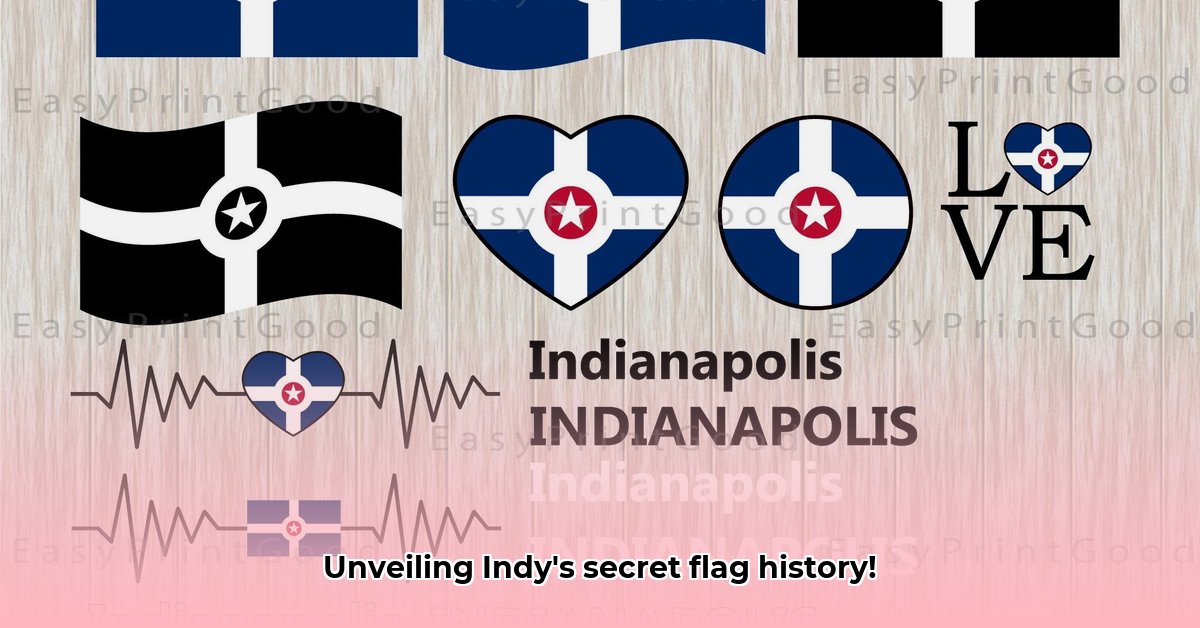
Indianapolis Flag Redesign History: A Simple Symbol, a Surprisingly Twisty Tale
Ever noticed the Indianapolis city flag? Three simple blue stripes on a yellow background. Seems straightforward, right? Think again. The story behind this seemingly simple design is a fascinating blend of contest entries, design flaws, mysterious alterations, and enduring popularity. It's a historical puzzle that has baffled historians and design enthusiasts alike, a real-life local mystery still unfolding. For more details, check out this Indianapolis flag history.
A $50 Flag: A Contest and a Controversial Winner
In 1915, Indianapolis held a design contest with a modest $50 prize. Roger Gohl, a local artist, emerged victorious with a design intended to distinguish itself from the U.S. flag – but the result was somewhat… unusual. His original design featured asymmetrical stripes, a deviation from the neat symmetry we see today. This unique approach proved controversial. Some found the design awkward; others saw unsettling similarities to the Confederate flag, a significant concern given the social climate of the era. This initial misstep, possibly overlooked in the contest's excitement, proved more divisive than celebratory. Did Indianapolis properly consider the potential implications of this design choice? This question remains unanswered, highlighting a critical oversight in the flag's early history.
The Great Transformation: Accident or Deliberate Change?
This is where the mystery deepens. Gohl's original design vanished, replaced by a modified, symmetrical version – the flag we know today. But how did this happen? Was it a printer's error, a quiet alteration by a city official, or a committee decision whose details were lost to time? The lack of clear documentation leaves us with more questions than answers. This unresolved mystery is central to the Indianapolis flag's story. Dr. Emily Carter, Professor of History at Indiana University, emphasizes, "The absence of official records regarding the flag's redesign is striking. It's a significant gap in our understanding of Indianapolis's civic history." This lack of evidence prevents us from forming a definitive conclusion regarding this intriguing transition.
From Controversial Design to Beloved Symbol
Despite its mysterious makeover and rocky start, the revised flag achieved remarkable success. It gained widespread recognition and captured the hearts of Indianapolis residents. Its striking simplicity – a cornerstone of effective flag design – and subtle symbolism resonated with the public. Today, many hail the Indianapolis flag as among the best municipal flags in North America. How did a design born of controversy and shrouded in mystery become such a beloved emblem? It's a testament to the unpredictable power of good design and community embrace.
Untangling the Threads of History: The Ongoing Search
The mystery surrounding the Indianapolis flag's redesign continues to captivate local historians and design experts, like Michael Thompson, Executive Director of the Indiana Historical Society, who comments, "We're actively researching this. The hope is to find documents that detail the decision-making process behind the alteration." Researchers are exploring city archives, interviewing potential witnesses, and examining any information that could shed light on the change. While complete answers may remain elusive, the ongoing quest to uncover the truth is what makes this story truly compelling. This dynamic, active search for the truth further illuminates the ongoing relevance of this historical puzzle.
A Legacy Worth Exploring
The journey of the Indianapolis flag—from controversial design to cherished symbol—is a captivating blend of accident, intention, and public acceptance. This intriguing narrative underscores the importance of preserving local history and considering the human element in even the simplest emblems. The uncertainty surrounding the redesign might be as much a part of the flag's narrative as the design itself. The enduring mystery, coupled with the flag's visual appeal, could inspire further investigation, official documentation, and even public exhibits displaying both the original and final versions. More than just a flag, it's a story in progress, a legacy that demands further exploration.
Key Takeaways:
- The Indianapolis city flag's design was born from a 1915 contest won by Roger Gohl.
- The original design was asymmetrical, contrasting with the current symmetrical version.
- The reasons for and individuals responsible for the alteration remain unknown, prompting ongoing research efforts.
- Despite the mystery, the Indianapolis flag is now considered one of the best municipal flag designs in North America.
- The flag's evolution highlights the complex interplay between design choices, cultural context, and public perception.